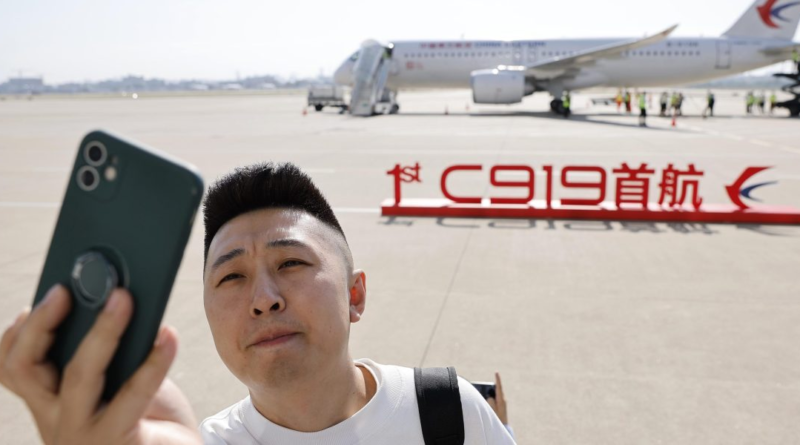The Chinese jet threatening the Boeing-Airbus duopoly makes its first commercial flight
Pomp and circumstance greeted the arrival of China Eastern Airlines flight MU9191 in Beijing’s Capital Airport on Sunday. Chinese state broadcasters streamed the entire flight, which departed from Shanghai. Two fire engines greeting the arriving jet with a water salute. Passengers on the flight itself got a special menu: claypot rice, mango pudding, and White Rabbit candy—a Shanghai specialty.
The celebration marked the first commercial flight of the C919, a single-aisle, narrow-body aircraft designed by the Commercial Aircraft Corporation of China (COMAC). Both COMAC and China hope the new plane can compete with Boeing’s 737 Max and Airbus’s A320, helping break the decades-long duopoly held by the two commercial aviation giants.
The C919’s first flight has been a long time coming for COMAC. The company first announced the plane in 2007, but production delays pushed the first test flight to 2017. Chinese regulators only approved the plane for commercial passenger operations last September. COMAC delivered the first plane to China Eastern in December 2022.
China Eastern now expects to put the C919 into regular commercial service, including a route between Shanghai and Chengdu, in China’s southwestern Sichuan province.
C919 fits into Beijing strategy of self-sufficiency
Beijing hopes the C919 proves that its strategy to build up domestic firms in high-end manufacturing and technology—not just in aerospace but also sectors like semiconductors, renewable energy, and electric vehicles—is paying off.
Worsening U.S.-China tensions, as well as U.S. restrictions on the export of advanced technology to China, have made Beijing’s effort of self-sufficiency more urgent. COMAC’s new plane will help the country withstand the U.S.’s “high-tech containment strategy,” argued an editorial from state-run outlet Global Times earlier this year.
Yet production of the C919 will be slow. While COMAC says it has received over 1,200 orders for the new jet, it only expects to be able to produce 150 planes domestically a year by 2028. By comparison, Airbus and Boeing delivered 661 and 480 planes respectively last year.
Earlier efforts to break up Boeing-Airbus duopoly
Several other companies have tried, and failed, to challenge Boeing and Airbus’s dominance. In 2018, Canada-based Bombardier ceded control of the CSeries, its most recent commercial plane, to Airbus. Then, in February of this year, Japanese manufacturer Mitsubishi abandoned its 15-year plan to create a regional jet.
Yet Chinese government support could give the C919 a potential advantage, as Chinese airlines—several of which are state-run—order the plane to support COMAC. Those orders might hurt Boeing and Airbus, both of which have sold hundreds of planes to Chinese airlines.
Boeing’s struggles in China
Boeing, in particular, has not yet rebounded from its 737 Max debacle in China. Beijing grounded the plane in March 2019 after the Boeing model was involved in two high-profile accidents, and only re-approved the plane for flight in December 2021. Even then, the 737 Max did not return to China’s skies until January. Chinese carriers have started to shift their allegiance to Airbus over Boeing.
In 2021, Airbus CEO Guillaume Faury predicted that COMAC might be able to capture market share from Boeing and Airbus when it comes to single-aisle planes (like Airbus’s A320), creating a “triopoly” by the end of the decade.



